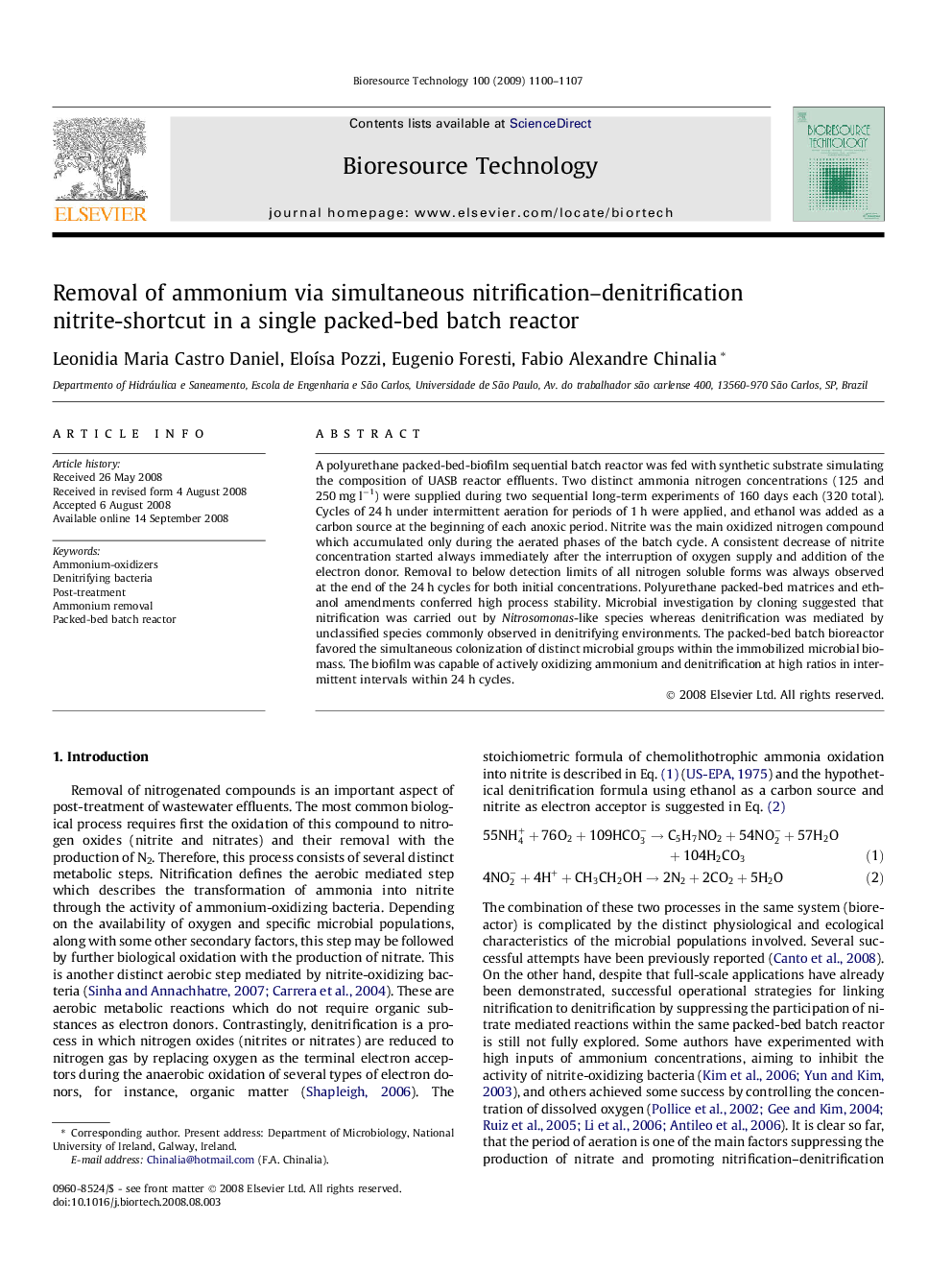| Article ID | Journal | Published Year | Pages | File Type |
|---|---|---|---|---|
| 686095 | Bioresource Technology | 2009 | 8 Pages |
Abstract
A polyurethane packed-bed-biofilm sequential batch reactor was fed with synthetic substrate simulating the composition of UASB reactor effluents. Two distinct ammonia nitrogen concentrations (125 and 250 mg lâ1) were supplied during two sequential long-term experiments of 160 days each (320 total). Cycles of 24 h under intermittent aeration for periods of 1 h were applied, and ethanol was added as a carbon source at the beginning of each anoxic period. Nitrite was the main oxidized nitrogen compound which accumulated only during the aerated phases of the batch cycle. A consistent decrease of nitrite concentration started always immediately after the interruption of oxygen supply and addition of the electron donor. Removal to below detection limits of all nitrogen soluble forms was always observed at the end of the 24 h cycles for both initial concentrations. Polyurethane packed-bed matrices and ethanol amendments conferred high process stability. Microbial investigation by cloning suggested that nitrification was carried out by Nitrosomonas-like species whereas denitrification was mediated by unclassified species commonly observed in denitrifying environments. The packed-bed batch bioreactor favored the simultaneous colonization of distinct microbial groups within the immobilized microbial biomass. The biofilm was capable of actively oxidizing ammonium and denitrification at high ratios in intermittent intervals within 24 h cycles.
Related Topics
Physical Sciences and Engineering
Chemical Engineering
Process Chemistry and Technology
Authors
Leonidia Maria Castro Daniel, EloÃsa Pozzi, Eugenio Foresti, Fabio Alexandre Chinalia,
